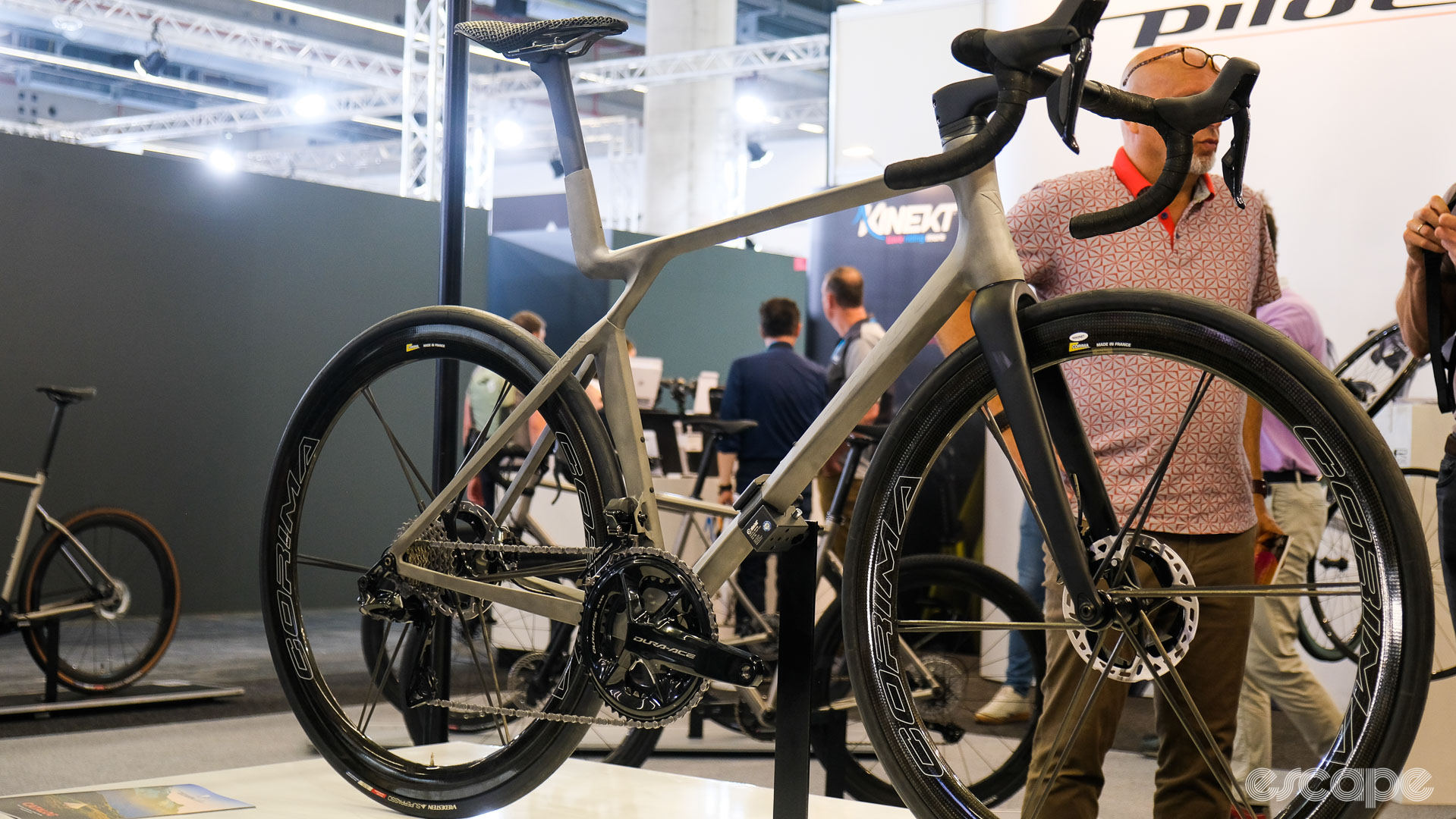Eurobike, Frankfurt: Pilot Cycles, a Dutch brand which specialises in custom titanium bikes, today unveiled a fully 3D-printed titanium road frame it says presents the future of frame manufacturing, offering a much more sustainable option than carbon fibre at an eventually comparable weight and price.
Arno Pieterse, CEO of Pilot was on the brand’s booth at Eurobike and explained that while the company had been exploring 3D printing as a manufacturing option for several years, the project was accelerated by the supply chain issues arising due to the COVID-19 pandemic. Pilot’s goals were to develop a more sustainable manufacturing process and simultaneously bring manufacturing closer to home. Furthermore, Pilot claims additive manufacturing is much safer for factory workers than carbon and its associated risks.
While Pilot unveiled a titanium-tubed bike with 3D-printed lugs at Eurobike 2022 under the same Seiren model name, the bike unveiled today is the brand’s first fully 3D-printed titanium rideable prototype frame. Better yet, Pieterse claims the Seiren delivers on its sustainability goals as the entire frame is 100% recyclable, with practically zero waste in the manufacturing process, and no paint, although a paint option may be available at the official launch.
While the bike on show is the “first print” of the new Seiren model, a second print will be completed soon which will undergo full safety and fatigue testing. Despite having not yet tested the frame, Pilot is convinced the frame will pass these tests based on internal analysis and claims the material is in fact stronger than the hydroformed tubing it already works with.
Pilot plans to develop both a UCI-approved race bike and fully customised frames. In fact, while customised frame geometries and builds is core to Pilot’s existing offerings, Pieterse sees much more potential in 3D printing, explaining custom geometry is just one option, with everything right down to the exact location of the bottle cage bosses a customisable option with 3D printing.
Pilot partnered with Materialise, a Belgian 3D-printing specialist company with over 30 years of experience, including producing Canyon’s 3D-printed prototype bike, to develop their 3D printing processes. The frame is printed in three parts, the front upper, rear triangle, and down tube section, with this first frame taking 16 hours of print time to complete. Pilot is hopeful they can reduce this print time by as much as 50% when it launches production run Seirens.
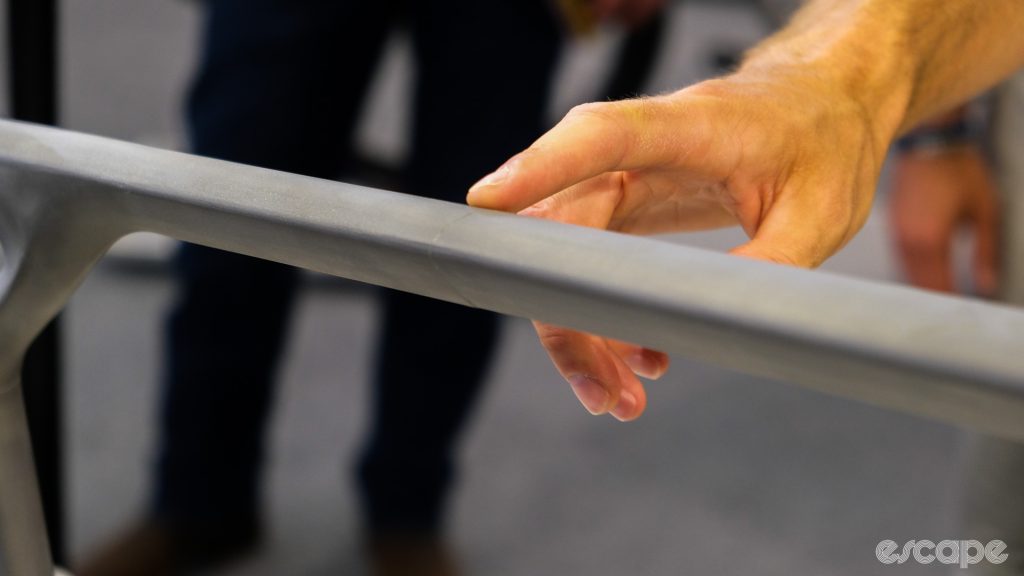
The three parts are then bonded together rather than welded. “Welding is a critical point, if there is a problem it’s always in the weld,” Pieterse explains. With the Seiren, Pilot uses titanium adhesive bonding, an aerospace engineering process which Pilot says not only increases the overall stiffness and improves fatigue resistance, but eliminates the excessive heat exposure of welding, so the bonded materials retain their structural integrity. Furthermore, Pilot claims this is one of the key benefits in 3D printing because the joins and bonding areas can be printed into “zero stress areas.”
The tube shaping is also key. “All the tubing shapes are not just design, but specific to improve the printing process” says Pieterse. The tubes have an almost aero-like profile, but as Pieterse explains, the narrower front and rear sections help minimise print time, materials used, and hence costs by reducing the number of support structures required in the print bed. The print is actually inverted from what I’d have imagined, with the print build-up from the narrowest section of each tube.
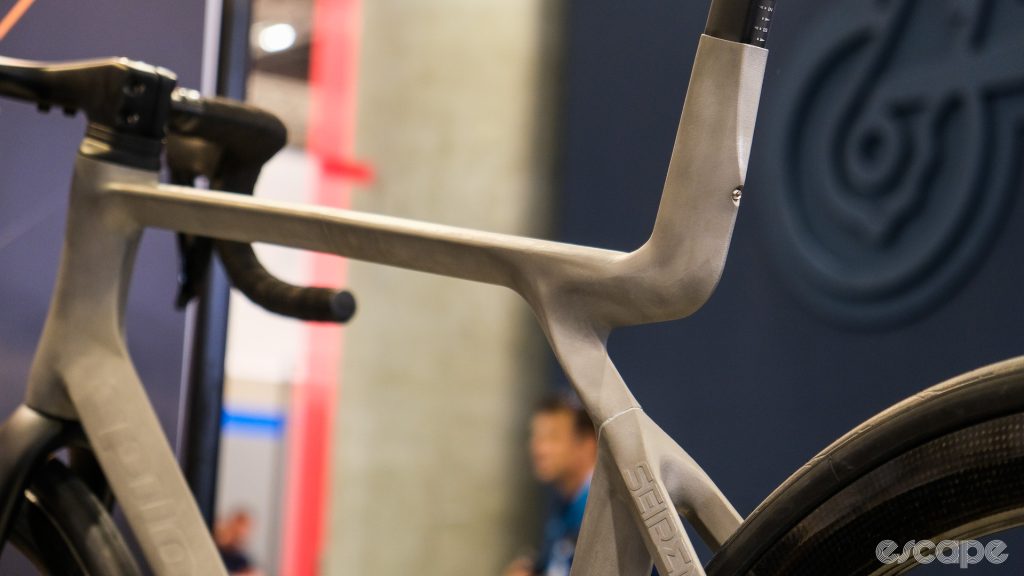
What about that seat tube? It certainly bears a striking resemblance to Trek’s new Madone and, presumably, is an attempt to improve compliance and ride quality. Not so, says Pieterse. While the cantilevered seat tube may well offer some improvement in compliance, Pieterse explained the design is actually essential in 3D printing an entire frame. All the glueing points must run directionally,” says Pieterse, and as such, the printed seat stay section must run collinear with the top tube section, which is said to be only possible thanks to this design.
Of course, the Seiren is not the first 3D-printed bike; both Dan Bigham and Fillipo Ganna broke the Hour Record aboard 3D-printed Pinarello Bolide F HR frames last year, while Canyon has already unveiled a prototype bike. That said, many have considered weight and price as the major hurdle for 3D printing in becoming a widely adopted frame manufacturing process.
However, Pilot says otherwise, claiming the Seiren prototype on show weighs just over 1 KG for the frame with the complete bike weighing in at 7.2 KG with a Dura-Ace 12-speed Di2 groupset and Corima wheels. Unfortunately, I I didn’t have scales with me to validate those claimed weights. That said, Pilot is convinced the final production frame will weigh much less, with a projected with for a complete bike under the UCI’s 6.8 KG weight limit.

Furthermore, Pieterse is convinced final production pricing will also come down and ultimately be lower than high-end carbon frames. This first bike would cost around €17,000, with the frame making up roughly half of that, but Pieterse is hopeful the final pricing should be closer to €2-3,000 per frame. That pricing is intriguing, but as Pieterse explains, such relatively affordable pricing is key to making this production method feasible and a realistic alternative to carbon. Key to this price reduction is Pilot’s plans to “fill the print bed” with additional components to maximise production capacity from each print.
Pilot is planning an official launch for the new Seiren to coincide with the FormNext 3D printing trade show, also in Frankfurt, in November. All going well, production will also start in November with delivery planned from January 2024.
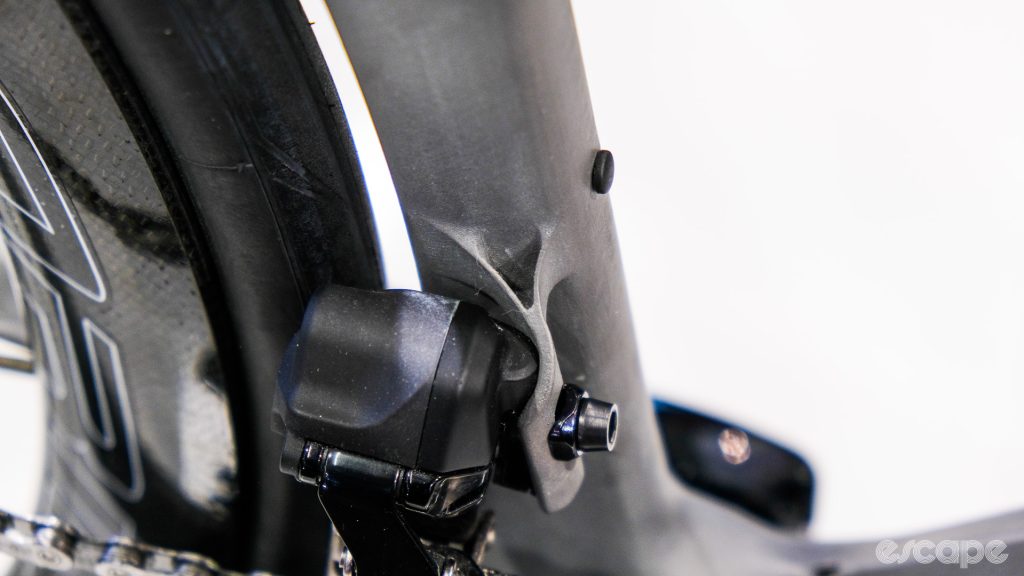
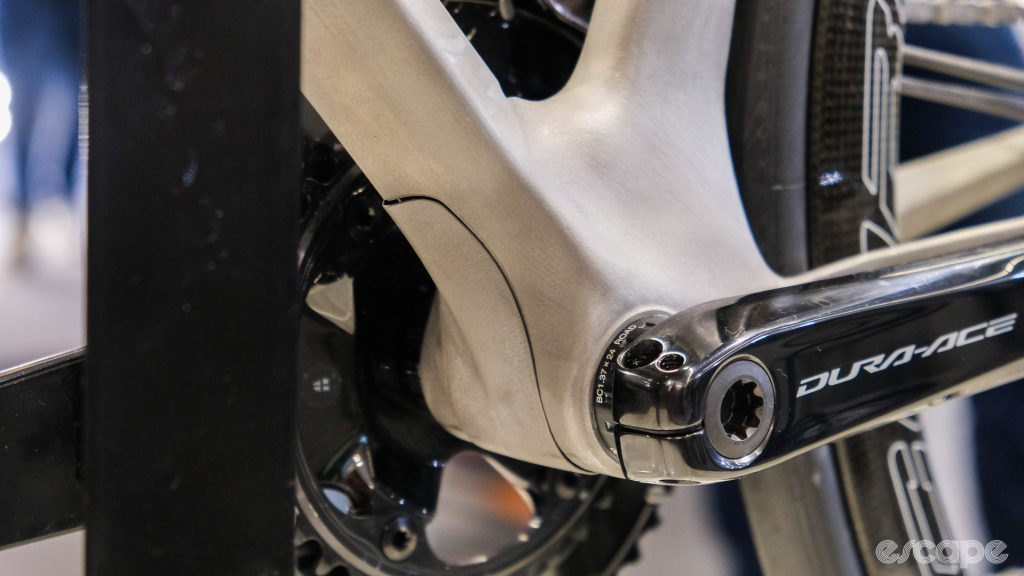
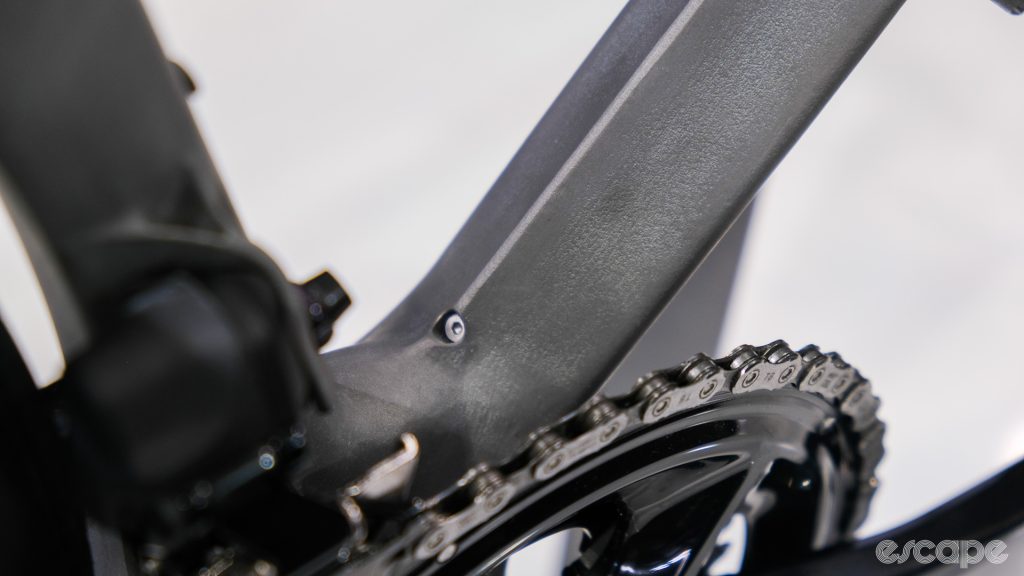

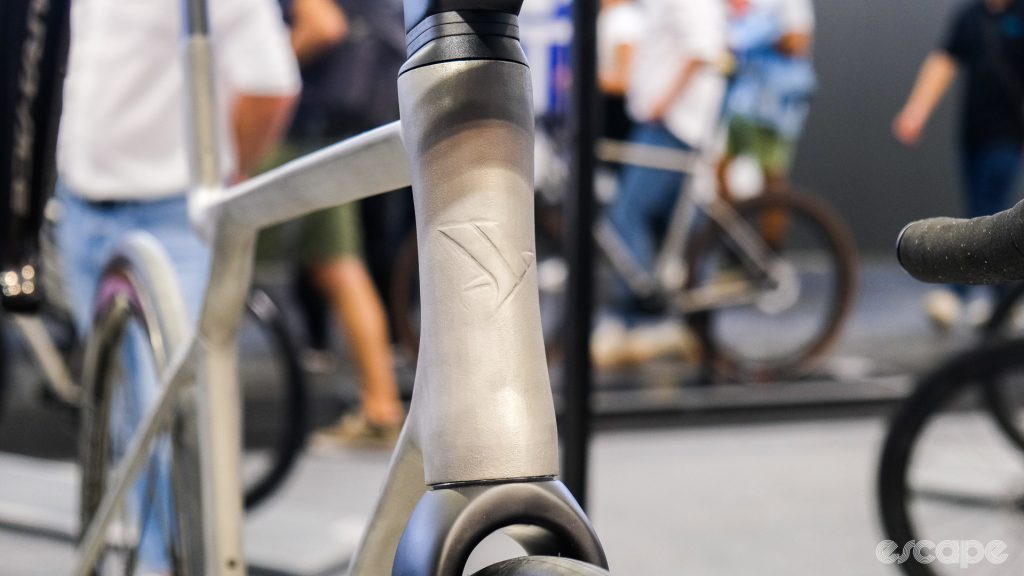
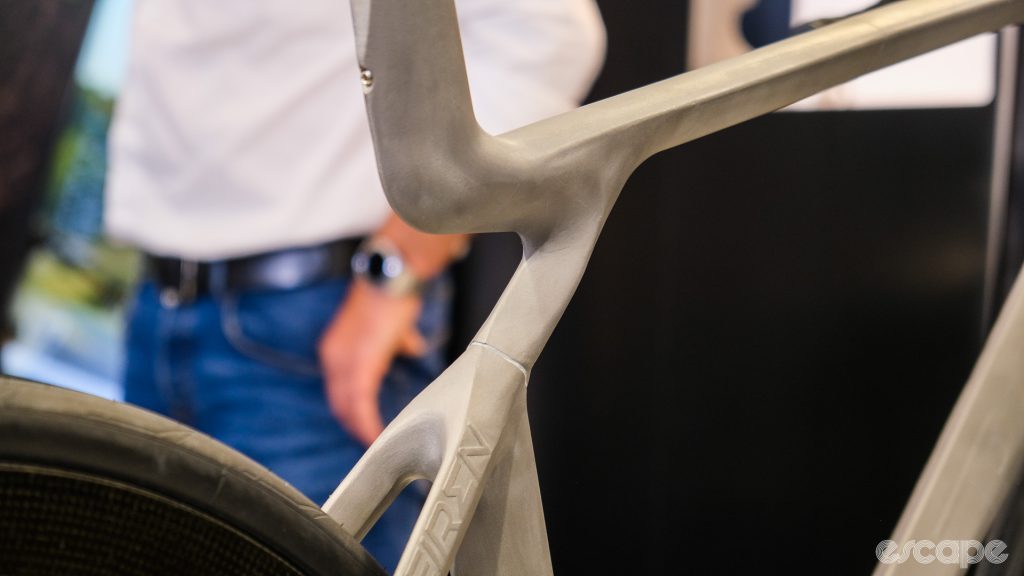
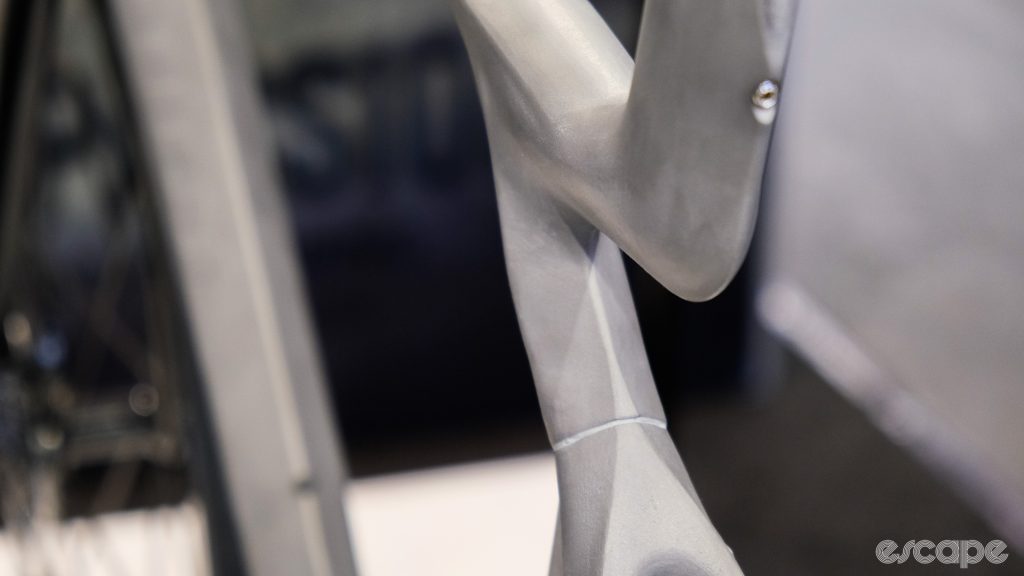
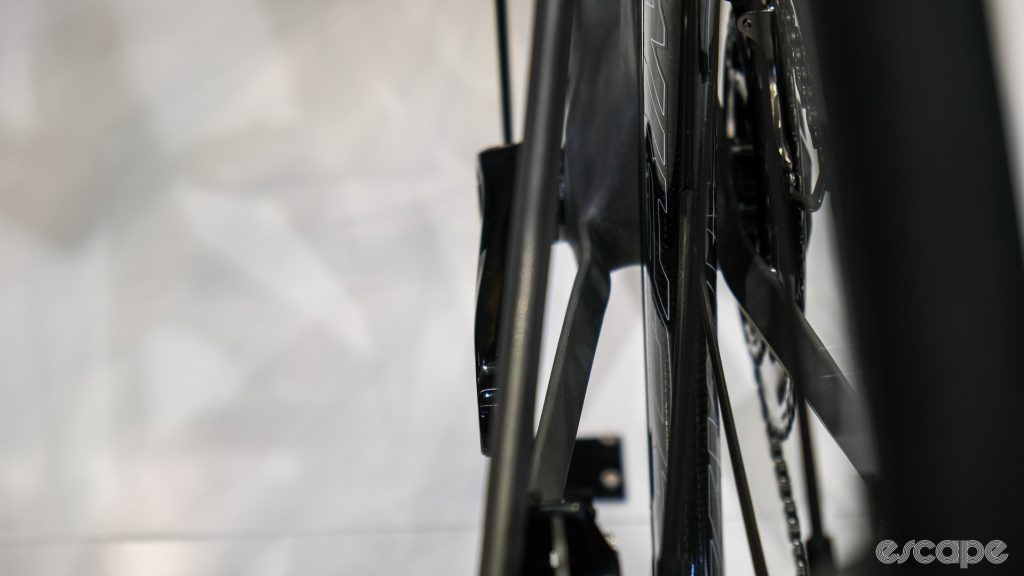
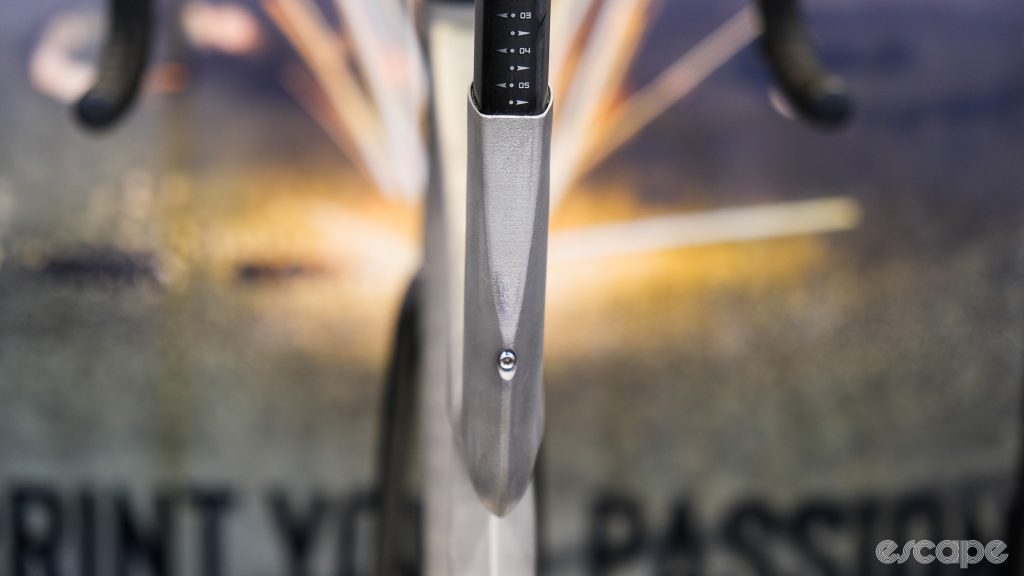

What did you think of this story?
